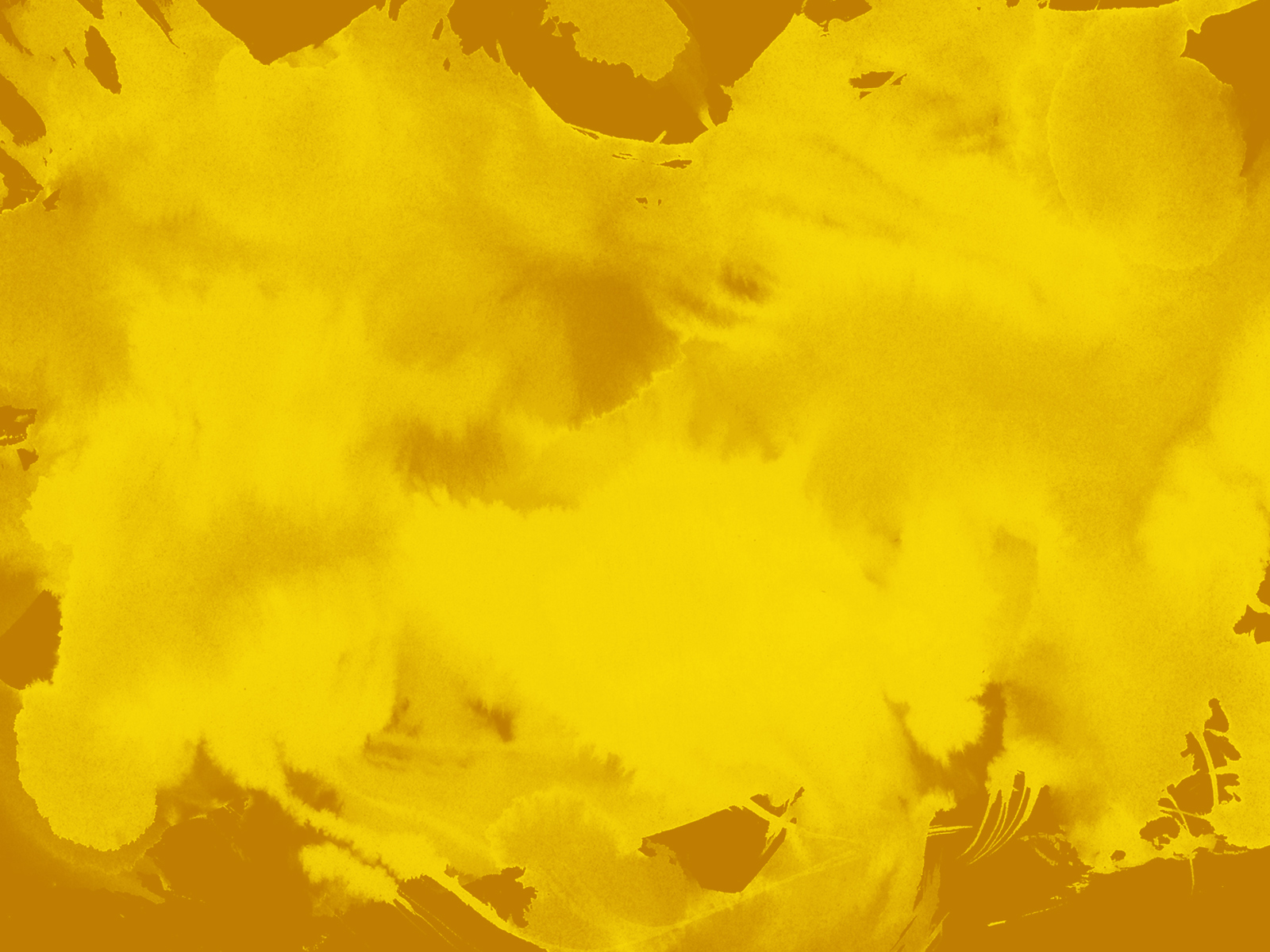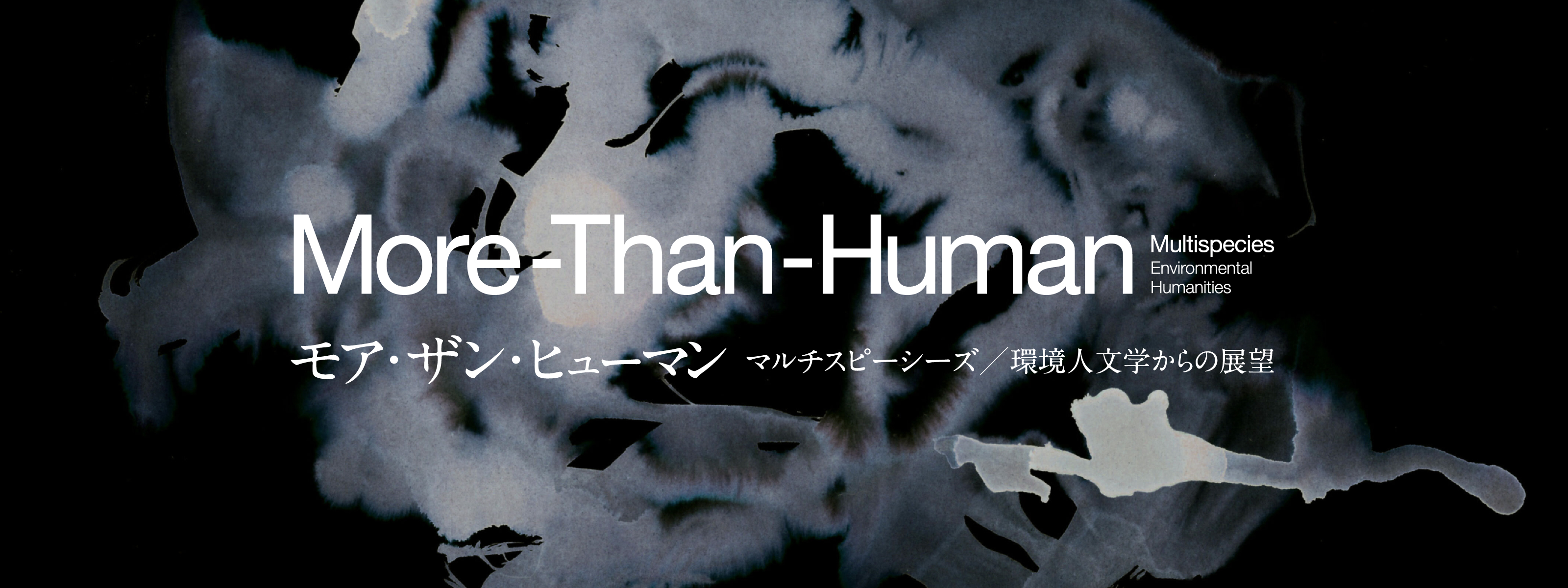Mari Miyamoto:
In your book Animal Intimacies: Interspecies Relatedness in India’s Central Himalayas*1, you have about five animals that you mainly focused on: the goat, the cow, the monkey, the pig, and the bear. Among those animals, obviously the monkey and the bear are not the domesticated animal. With them it’s a different kind of relationship people might have in the village in comparison with domestic animals they keep at home. Why did you think that you should put these all five animals together in one book, and what did you wish to describe through them?
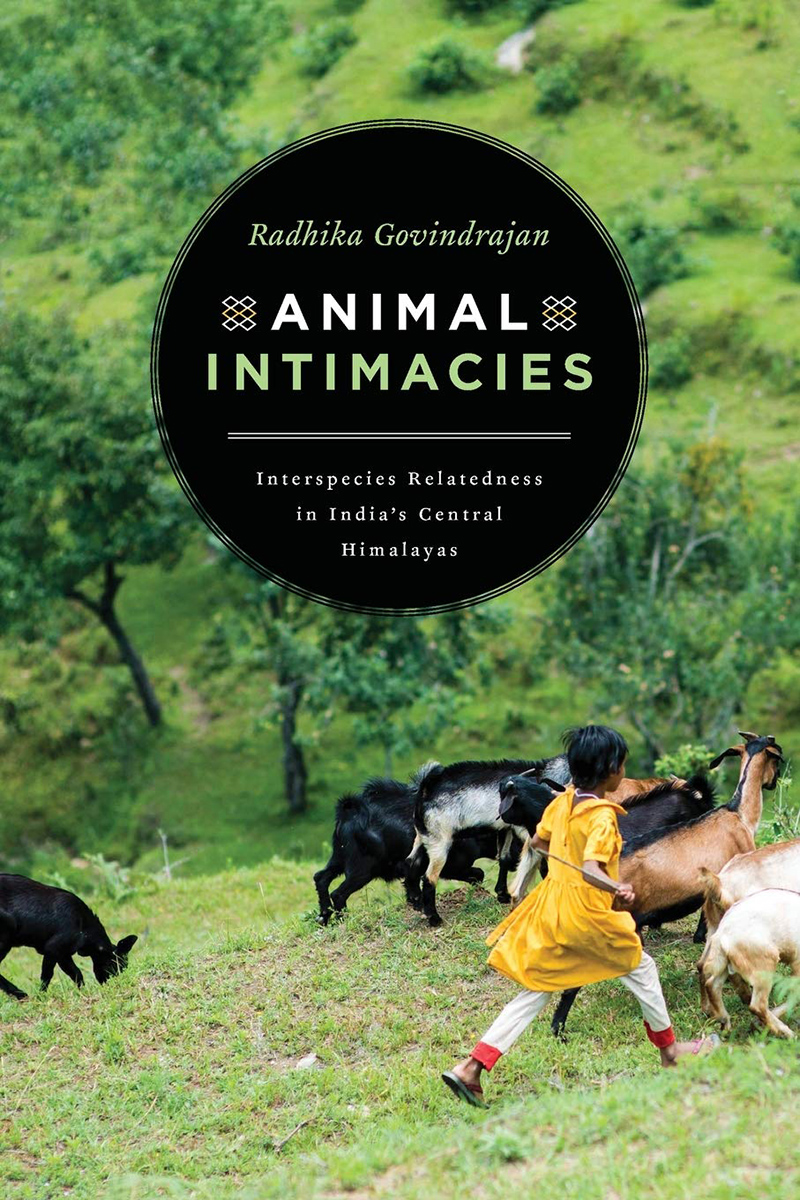
Radhika Govindrajan:
My master’s degree was in modern South Asian history, and I did research for my M.A. thesis on colonial wildlife conservation in the same region in which I later did fieldwork for my PhD. When I started my PhD, I thought I would maintain the focus on wildlife conservation, but extent it into the contemporary moment. But I soon realized that categories like wild and domestic were historically contingent and shifting, and constantly bled into one another. One example was when people told me that a leopard stalking villages and attacking people was a clear sign that their gods wanted bali – the sacrifice of a domestic animal; leopards were thus recognized as domesticated by the gods. This categorical fluidity made me want to think more deeply about how different animals moved in and out of different placements. It made me uncomfortable with “wildlife” as a self-evident or stable category, and pushed me to think instead about when and how such categories became meaningful in the course of everyday encounters between human and nonhuman animals.
As for why these five animals, I think each of these five animals conditioned a distinct story. One of the key points of the book is that the histories, personalities, and actions of individual animals or groups of animals critically shape a particular set of social relations or social worlds. The chapter on sacrifice as a form of kinship is contingent on the distinct materiality and tendencies of goats and the relationships that people have with them. The question of cow-protection and the ways in which state development projects has created a dilemma around whether to keep “foreign” cows or “indigenous“ cows could only be addressed through an engagement with the particularity of different cows. The concerns about outsiders and what that would do to probably cultural identity could only be explored through the stories about monkeys from cities in the plains who were dropped off in mountain villages. The story wouldn’t be the same if I told it through goats because it was the actions of the outsider monkeys that made those tellings about belonging possible. And then the questions of sexuality and patriarchy really coalesced around talk of bears.
I think I first became interested in these larger arcs, and then realized that they were made possible by these specific animals. When I first set out to do this, I didn’t think that each chapter would engage with a different animal. I thought it would be a story about sacrifice, about religion and politics about conservation, about property and movement and migration, and then about sexuality. And as I was writing it, I thought, ‘Oh, these distinct threads are definitively shaped by these animals and the situated relationships they have with humans, gods, the state, and other nonhumans’. That’s what led to that arrangement rather than any desire to arrange a chapter around a different animal.
§
The Goat Who Died for Family: Sacrificial Ethics and Kinship
Miyamoto:
The second chapter is about the sacrifice of the goat. Here you describe the value of the labor that the women in the village contribute for sacrificial animals.
The story which describes the affection of women toward ‘nature’ is often explained with existing theories such as eco-feminism that Vandana Shiva argued*2. However, your explanation which focuses on labor of women diverts the discussion away from the existing theories and gives us a fresh perspective.
Govindrajan:
Yes, I think some of the eco-feminist literature tends to traffic in these essentialized categories, which can be really problematic even if such claims are well-intentioned. There’s some really wonderful work that complicates these claims, especially in the context of the Chipko movement, which is hailed by eco-feminists as an example of women’s affinity for nature. Haripriya Rangan points out that the eco-feminist claim that women were ‘natural’ environmentalists actually ended up invisiblizing women’s development desires*3. One of the reasons they protested in the first place was to draw attention to the difficulties of making a livelihood in these conditions. For me, then, thinking about questions of political economy – caste, capital, gender – is crucial, and provides an important counter to any fetishization of women’s supposedly natural affinity for nature. I’m interested in exploring how affective attachments and tensions emerge from particular arrangements of labor that are shaped by a range of structural factors. The chapter on sacrifice thus thinks through how the gendered discourse of maternal attachment is shaped by a patriarchal regime of labor in which women are entirely responsible for the work of caring for animals.
§
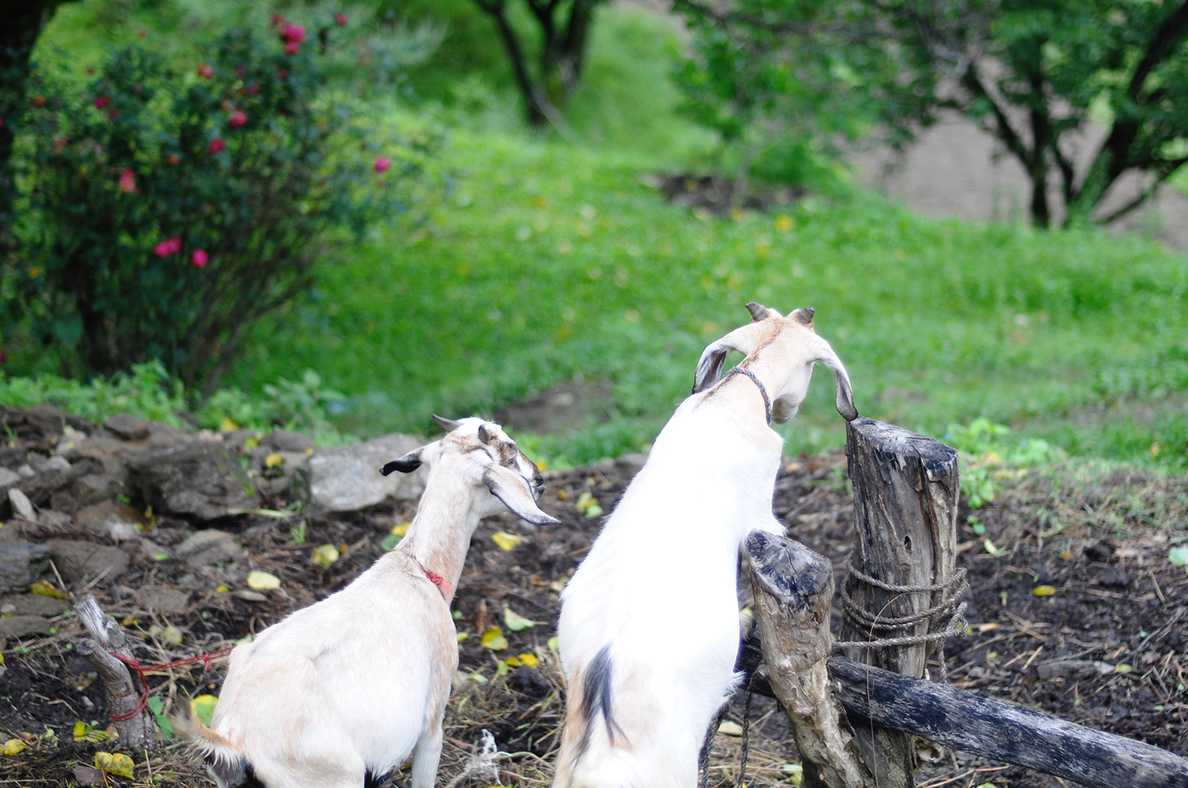
Miyamoto:
It’s stimulating to lean the idea that the amount of the labor is estimated by gods, and only that labor made the goat valuable as a precious sacrifice. However, your argument made me wonder whether wild animal cannot be a sacrificial animal or not. Should we think that there is no hunting custom in those mountain areas? Is there any chance that the current practice of sacrificing the domesticated animal was actually implemented by the people from the plain?
Govindrajan:
That’s a fascinating question. If you go back to the Vedic period, scholars like Veena Das tell us, humans were one of the five categories of sacrificial beings*4. Different beings, including those we might term wild, were recommended for different kinds of sacrifices. However, in my area of fieldwork, they only sacrifice domestic animals. The original sacrifice, as the popular histories of sacrifice in the region suggest, was a human, but the gods were convinced, after much pleading by bereft parents, to take an animal substitute instead. But the loss of that substitute must provoke pain and sorrow, because it really isn’t a sacrifice if it’s easy to part with.
As for hunting, the long histories of colonial and postcolonial wildlife conservation in the region have meant that hunting has almost disappeared because of the legal ramifications. There was a real fear that the state would punish people – fining or imprisoning them – for “poaching.” People would occasionally kill jungle fowl, or talk about killing a wild boar, but the hunting of wild animals is not a common practice by any means. No one I talked to remembered ever having offered a wild animal as sacrifice.
Now having said that there were certain temples in the region that have variations on what is sacrificed and how. There’s a temple called Devidhura. And the story there goes that the goddess, when beseeched to accept an animal substitute for the original human sacrifice, said, “Okay, you can give me animal sacrifice, but I also want some human blood.” What happens in that temple on the day of Rakshabandhan is that the four clans that are in charge of taking care of the temple will come to the temple and then they will stone each other for 10 minutes. And the idea is if there’s enough human blood dripped into the ground after the fight, then the Goddess’s desire for human blood is satisfied. And as you might imagine, this kind of ritual has become the center of so much anxiety for so many activists and observers, particularly because of the perceived lack of “modernity” exemplified by a ritual stoning. But it’s a resolutely “modern” space. The festival was sponsored by Vodafone on at least a few occasions. You could get a SIM card while you’re watching the goings-on! Local district officials often inaugurated the festival. It’s a really fascinating space to try and think through some of the discourses of tradition and modernity that condition how activists approach sacrifice.
§
The Cow Herself Has Changed: Hindu Nationalism, Cow Protection, and Bovine Materiality
Miyamoto:
In the third chapter, you described people’s attachment towards local cows which they call “Pahari cows” and this category works when they compare it with Jersey cows which they call it “business cows” or “modern cows.” Your story reminds me of a case of Bhutan where the government has implemented jersey cows for the development of pastoral village. At the village where I study, people are consisted of Buddhist, the cow doesn’t have religious value like Hindu has but people worry whether the foreign cow would prevent them from seasonal migration, and the degree of crossbreed is people’s great concern. I wonder in your field if the local cow crossed with jersey, the newborn hybrid is considered as a jersey or not. While people appreciate the ritualistic power which exclusively belongs to the pahari cows, where does the people place the border between two kinds of cow?
Govindrajan:
If they cross breed cattle, they usually call it dogalla, which is, something in between two distinct breeds. But it’s not considered a “pure” Pahari cow anymore.
Even within Hindu supremacist discourse, there’s really a strong emphasis on indigeneity. A lot of cow shelters now will say, “Oh, we only keep indigenous cows. We don’t want these foreign cows.” And as I write in the book there was one political leader from the state of Haryana, I think, who said that if you drink the milk from Jersey cows, you will become a criminal because Jersey cows themselves have criminal tendencies, and so on. There’s a very strong xenophobic strain within that discourse. Some cow-protectionists are now telling the state, “You should only encourage indigenous cattle breeding.” And the state is also investing in certain kinds of indigenous breed recreation projects.

However, the fact remains that if you’re going to really push dairy as the motor of rural development, then it’s also hard to promote “mountain” breeds because they give less milk than Jerseys. Some people are suggesting Sahiwals or other plains-based indigenous breeds because they yield more milk, but they’re harder to keep in this landscape. In other words, there’s a tension at the heart of this project of promoting dairy and cow-protection. One of the biggest tensions I describe in the book is this question that plagues both Hindu supremacists and local people: ‘what to do with the Jersey cow?’ The cow protectionists are unwilling to say, “Oh, these Jersey cows are killable because they’re foreign,” even if they believe that foreign cows are impure, criminal, unworthy of love and care. Ultimately, they’re still cows. And this recognition creates an impasse, a conundrum that they’re trying to now solve. Because a lot of them also recognize that people can’t actually raise so many cows, that they will abandon bulls and old cows as long as dairy is promoted so heavily by the state. The logical outcome of dairy, as feminist scholars like Katie Gillespie*5 and Yamini Narayanan*6 have pointed out, is beef. This is a problem that I think a lot of right-wing cow protectionists are thinking through. In the book, I discuss how a VHP leader argued that Hindus shouldn’t be blamed for abandoning cows, and that the responsibility is on cow-protectionists to think of how to convince people to hold onto their cows and not abandon them. They’re asking, ‘how do we promote indigenous cows in a way that also maintains the focus on dairy?’ And that becomes a point of conflict with the state in interesting ways sometimes.
§
Miyamoto:
It’s really fascinating to see the environment surrounding cow protection in India now. The category of cow has already been multilayered but now we can see that the aspect which you described about indigenous cow has become very important in many areas including the Himalayas. It seems women need to put more effort to raise Jersey than to indigenous cows nowadays. If we think about the quantity of the labor that those women contribute, jersey cow could be the most suitable gift to gods in future, don’t you think? Or do you think a jersey cow is never able to replace the value of pahari cows in terms of the ritualistic value?
Govindrajan:
No, people are open to the idea that Jerseys could become ritually significant cows. One question I mention in the book, which I found so interesting, is when a Jersey cow becomes a mountain cow. Not necessarily in terms of “breed” transformation, although breed is hardly a stable ontological category either, but in terms of various substantive attachments to and exchanges with the mountains – the food they eat, the water they drink, the deities they become subject to, how many generations they have spent in the mountains. I think a lot of people were tussling with the idea that Jersey cows are all they might have access to given that it’s increasingly to find “pure” pahari cows in rural households, at least in the area that I worked in. People are making do with Jersey cow urine and dung for rituals. Some people speculated that the rituals would eventually accommodate the different materiality of Jersey cows. There was an openness to the Jersey cow becoming both the “business” cow and the “ritual” cow. I think that’s also what distinguish these farmers’ views about the distinction between different cows from the untrammeled xenophobia of the Hindu right display. These villages were also using categories like foreign and local, but it didn’t mean that they bear a deep affection for the Jersey cow. And that’s something I write about at length in the book. Even though villagers claimed that Jersey cows were cows unsuited to particular rituals, they had an intense affection and respect for the cows they were raising. This was particularly true for the women who did the bulk of labor involved in raising these animals.
§
Outsider Monkey, Insider Monkey: On the Politics of Exclusion and Belonging
Miyamoto:
In chapter four, you described about the people’s attitude towards the monkeys brought by strangers from cities. In the background of the phenomenon do you think there is also the worship of Hanuman (monkey god of Hinduism)? I mean, does the people try to relocate those monkeys from cities to mountains because they think such relatives of Load Hanuman should be in the sanctuary?
Govindrajan:
Well that, but also the monkeys are also protected under the Wildlife Protection Act. There’s definitely a religious argument against culling, but there’s also the argument that animal rights activists make, which is that killing monkeys is a contravention of the law. In the neighboring state of Himachal Pradesh, which is also a Himalayan state, the state announced that it would give cultivators a license to shoot marauding monkeys. When that happened, there was a huge furor among many different constituencies. The animal rights groups said this was cruelty; some wildlife conservationists were worried about opening the door to a wholesale destruction of India’s wildlife heritage; and some Hindu nationalist groups said you can’t kill monkeys, they’re an embodiment of Hanuman. Many forest officers told me that they really struggle with what to do given how contentious this issue is.
But the damage to rural livelihoods is real. There are multiple organizations, NGOs, that are working on this. People can’t carry on with cultivation in these conditions. It’s a huge problem, and different solutions have been put forward to it. There’s the sterilization solution. That didn’t get off the ground because there were concerns, particularly from animal-rights activists, about whether it could be done humanely. The culling solution hasn’t really found much favor yet either.
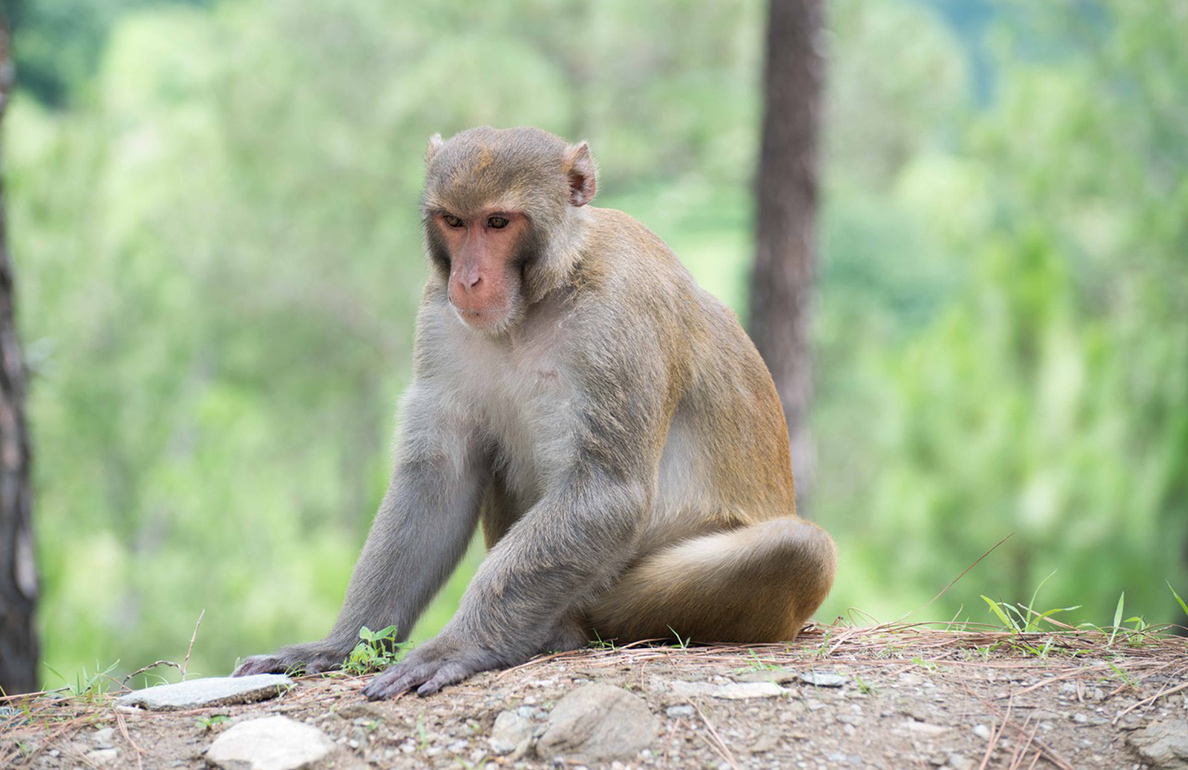
The religion question was a complicated one for many pahari villagers. They were inclined to think that it was sinful to kill monkeys, but you also often heard of people who would poison monkeys that were raiding their orchards. One man once told me that he found this dead rhesus monkey on his estate. Even though he didn’t say it in so many words, I gathered that he had laid out poison in his fields because of frustration at having lost much of his harvest. When he saw the dead monkey, he felt guilty and afraid, and decided to feed some langurs as an act of atonement. So, there were deep ethical and religious dilemmas about how to deal with these outsider monkeys, and a whole range of solutions and responses emerged in response to them.
§
Miyamoto:
Now they have outsider monkeys that came from cities, but I think they have had their own monkeys in their region since before. And if they compare that pahari (mountain) monkeys with the outsider monkeys, of course people now say that they have attached to the pahari monkey as their own and how strange the city monkey is to them. However, I also wonder if the perception towards those mountain monkeys has got softer after the arrival of outsider monkeys? How was the relationship with those pahari monkeys they had before? Were they just a friendly creature that could be part of the community or people recognized them as a pest to eliminate?
Govindrajan:
There was definitely a strong sense that any and all animals in that region are understood as floating between these different categories – pest, friend, companion. Pahari monkeys could definitely be “pests” at moments. But there was also a sense for people that their “predation” could be dealt with, that it wasn’t “aatank” terror, a word that people often used to describe co-existence with the outsider monkeys. At most, people told me, pahari monkeys would come to your orchard for a few days, but then retreat to the forest. The forest was enough for them. They would come out of the forest occasionally, but they wouldn’t live in villages. Now this could also be nostalgia or a construction of the past that was used to emphasize the specificity of the present. But it was a widespread claim, and I think we have to take it seriously. What was also different, people said, was the nature of predation. Even if forest monkeys would sometimes take your fruit or eat your crops, they wouldn’t enter your homes in the same way. There was a widespread sense of fear and insecurity. ‘These outsider monkeys, they just walk in. They enter while you’re sitting there and they will take your food from you. And if you say anything, they’ll bite you.’ People would talk about this as a kind of ‘daring criminality’ that was absent in mountain monkeys. It was this utter absence of fear and the almost mocking “takeover” of the village that people would point to when distinguishing the depredations of pahari monkeys from outsider money.
§
Pig Gone Wild: Colonialism, Conservation, and the Otherwild
Miyamoto:
It was very interesting to read about the story of runaway sow since it contains many layers. Raising pigs used to be a common practice in Bhutan as well and pigs were sometimes kept under the toilet as you know. But the reason why people prevent themselves from raising pigs seems quite different, even though it relates to religion.
In your chapter, while you described how the domesticated pig from the experimental farm was escaped and gone wild, you also gave a picture of multi-layered structure of the caste oppression even though discrimination of lower caste has been denied and banned in India.
Govindrajan:
Caste-based oppression remains really present and powerful in that region, as across India. I was interested in understanding both how dominant caste violence and Dalit resistance to and refusal of this oppression and violence were done in the course of everyday relationships.
Pigs provided an important point of entry into this question. Talking about pigs and the Dalit castes who raised them as “filthy” became a way for dominant caste individuals to enact everyday caste violence in the service of maintaining what Dr. B.R. Ambedkar calls the “graded inequality” of caste*7. As Fanon so powerfully points out, the discourse of the oppressor is fundamentally zoological, ascribing an animality to the oppressed that is then used to justify colonial violence against them. I think there is important work to be done on the intersection, what Benedicte Boisseron might call the “connectedness,” of caste and animalization, and studying human relationships with nonhuman animals allows us insight into that relationship*8. But we also have to be very careful with how we think of and write about this intersection. As Zakkiyah Iman Jackson notes, the rush to move beyond the “human” and undo the human-animal distinction not only overlooks the fact that the human was never a stable category, but also undermines the struggles of various oppressed groups for a liberatory humanism*9.
For me, what was especially crucial was to not present dominant-caste caste violence as total, in the sense that it was uncontested by those against whom it was directed. I wanted to emphasize the many ways in which Dalit villagers were challenging and undoing these forms of dominant-caste oppression by also taking recourse to the story of the runaway sow. As I mention in the book, several Dalit villagers would often point out that the wild boar in the forest were probably descended from the runaway sow, which meant that they were not really wild. This, they said, meant that those dominant castes who would decry the consumption of pork as unclean and a marker of ‘lower-caste’ status were violent hypocrites, at best. These critiques of caste domination, I argue, drew on the history of the pig who went wild, particularly the fluid nature of wildness as represented by her story. For me, these contestations remind us that the relationship between caste and animality is contingent and unexpected, and must be ethnographically understood.
§
Miyamoto:
Thank you, Radhika. It’s very stimulating argument. I assume the point Zakkiyah Imam Jackson suggests is worth considering. There is a lot to take in order to argue about the animality.
Although it might not be an important point, I am curious about the part people are talking about tusks of the runaway sow. People tell you that the descendant of the runaway sow has a bigger tusk. What do they want to imply by talking about it, do you think? Do they fear gene manipulation of animals because they think it makes animal dangerous? I thought it’s an interesting point to argue but it seems you didn’t include that topic in your argument in the end. Could you tell me what did you meant to say through that story?
Govindrajan:
In that chapter, I tried to put different evidentiary claims about the feralness of pigs into conversation with one another. Many wildlife biologists suggest that pigs can undergo morphological changes very quickly if they go “feral.” Their morphology can change within a few generations, it’s that quick. For me, those observations were very much in keeping with what people told me about the history of the runaway sow and the ease with which her descendants became “jungli” or wild. One man, as I write in the book, called wild boar “paltu-jungli” or “domestic-wild,” which spoke to how easily and quickly pigs could transition between these states. For me, it was important to emphasize the evidence that people shared for their claims about the contingent nature of wildness. I call it evidence deliberately. These are people who have lived alongside animals for a very long time and have a rich store of observational, experiential knowledge about them. I was interested in layering these different kinds of situated knowledges onto one another, rather than using one to sort of confirm the veracity of the other. In other words, I didn’t want to set up what Kumaonis were telling me as a sort of “local knowledge” that had to be buttressed or authenticated by “scientific evidence.” I wanted to think with their own evidence, and put that into conversation with the situated knowledge of wildlife biologists.
§
The Bear Who Loved a Woman: The Intersection of Queer Desires
Miyamoto:
The last chapter is about the bears. It’s an inspirational chapter. The bears appear quite differently from the other animals that you described in your book. Through the stories of the bears and women, you suggest that there are issues around women in terms of gender equality, reproduction and domestic violence. I would like to know what motivated you to describe this story at the end of the book. Did you aim to suggest that those notions about gender issues have been always there as the undercurrent of women’s conversation? And the bear story was the most suitable one to extract and display women’s secret complaints or hopes?
Govindrajan:
That’s a really interesting question. I was struggling with how “absent” bears were from the landscape compared to goats, monkeys, and even wild boar and leopards. And yet, as I realized later, bears were present in the material-symbolic landscape in significant ways that I needed to reckon with. The work of my colleague Juno Parreñas was really helpful in thinking through this, especially her idea of “material traces” that signal presence in the face of what seems like absence*10. There were “bodily traces” of bears everywhere, be it flattened patches of corn that signaled a nocturnal feast or, more disturbingly, scars on the face of a woman who had been attacked by a bear.
I think that women’s intensely sexual talk about bears ended up undoing so many fundamental proscriptions and binaries. The idea that humans and bears could be lovers, for example. In emphasizing the potential openness of intimacy, they were challenging the caste patriarchal control of women’s sexual pleasure. There was one woman who me and several others about how she had rebuked her husband when he said he was too tired to have sex. A bear wouldn’t be too tired to have sex, she said to him. I was really struck by the way she claimed her sexual desire through this bear-talk. Indeed, the pleasure that women took in talking about sex with bears was something I wanted to think through. It wasn’t just that they were strategically using this talk to challenge patriarchy. There was a genuine curiosity, a frisson of excitement in imagining what sex with a bear would feel like.
For me, the challenge was to think about how this was an intimate, embodied relationship that was very unlike the relationship that women shared with the goats they raised, but that was no less meaningful in shaping how categories like human and animal, kin and stranger were understood and experienced. For me, this chapter also spoke to the diversity of people’s relationships with nonhuman animals, and, as I said earlier, the importance of ethnographically attending to the situated manifestations of those relationships.
§
Miyamoto:
Yes, certainly. Although this chapter looks distinct on the surface, the bear story stimulates us to connect all the chapters through human’s imagination. And as you just said the idea that people experience pleasure in crossing the boundary of multispecies, it really made sense with the rest of the book.
The prospect of the multispecies ethnography
Miyamoto:
Though I understand that your book involves a variety of scholarship beside multi-species ethnography, is it possible to ask your opinion about the prospect of the development of the multispecies ethnography in future?
Govindrajan:
What I find so exciting about the field of multispecies ethnography is its capaciousness, the fact that it accommodates such a wide range of interests and commitments. For me, what loosely unites the diversity of work that is often described as multispecies ethnography is an interest in tracing what Stefan Helmreich and Eben Kirksey described as the particular histories and biographies of other-than-human beings and objects. Beyond that, what is so powerful about all the work in this field is openness and, indeed, commitment to creative exploration and thinking. In my own work, I’ve thought about this as a critical anthropomorphism, a willingness to imagine oneself in another, a position that for all its risks and erasures entails a movement beyond the self and opens up the possibility of futures that might be more just and less narcissistic.
I like to think of multi-species ethnography as a kind of analytical lens that can offer insight into a variety of very different questions that may not, in fact, center human relationships with nonhumans. There are people who are doing multi-species ethnography as a way to understand health and disease, like Emily Yates Doerr*11, Natalie Porter*12, or Alex Nading*13. They’re doing multi-species ethnography in the spaces of industrial capital, like slaughter-houses, dairy farms, or palm plantations like Alex Blanchette*14, Katie Gillespie, and Sophie Chao*15. There’s work that centers questions of race, gender, imperialism, and religion in crucial ways, such as that by Juno Parreñas, Harlan Weaver*16, Annu Jalais*17, Benedicte Boisseron, Zakkiyah Iman Jackson, Maria-Elena García*18 and Mayanthi Fernando*19.
As far as I’m concerned, multi-species ethnography is at its most powerful when it seeks out such conversations with broader scholarly fields, thinking about how human relationships with nonhumans are shaped by and shape discourses and practices of race and racism, gender, sexuality, medicine, capital, among a whole host of other structural factors. I think in a sense the field has really exploded to the point where it’s hard to pin down its overarching theoretical framework to any one approach or school. And that’s wonderful! Multispecies ethnography, to me, is at its best when it explores, through a variety of different methods, how different social worlds are composed through the agencies, the labors of a variety of different beings. And I hope this fluidity and openness will continue to characterize the field even in the future.
§
Miyamoto:
Thank you so much Dr. Govindrajan for taking time.
§
